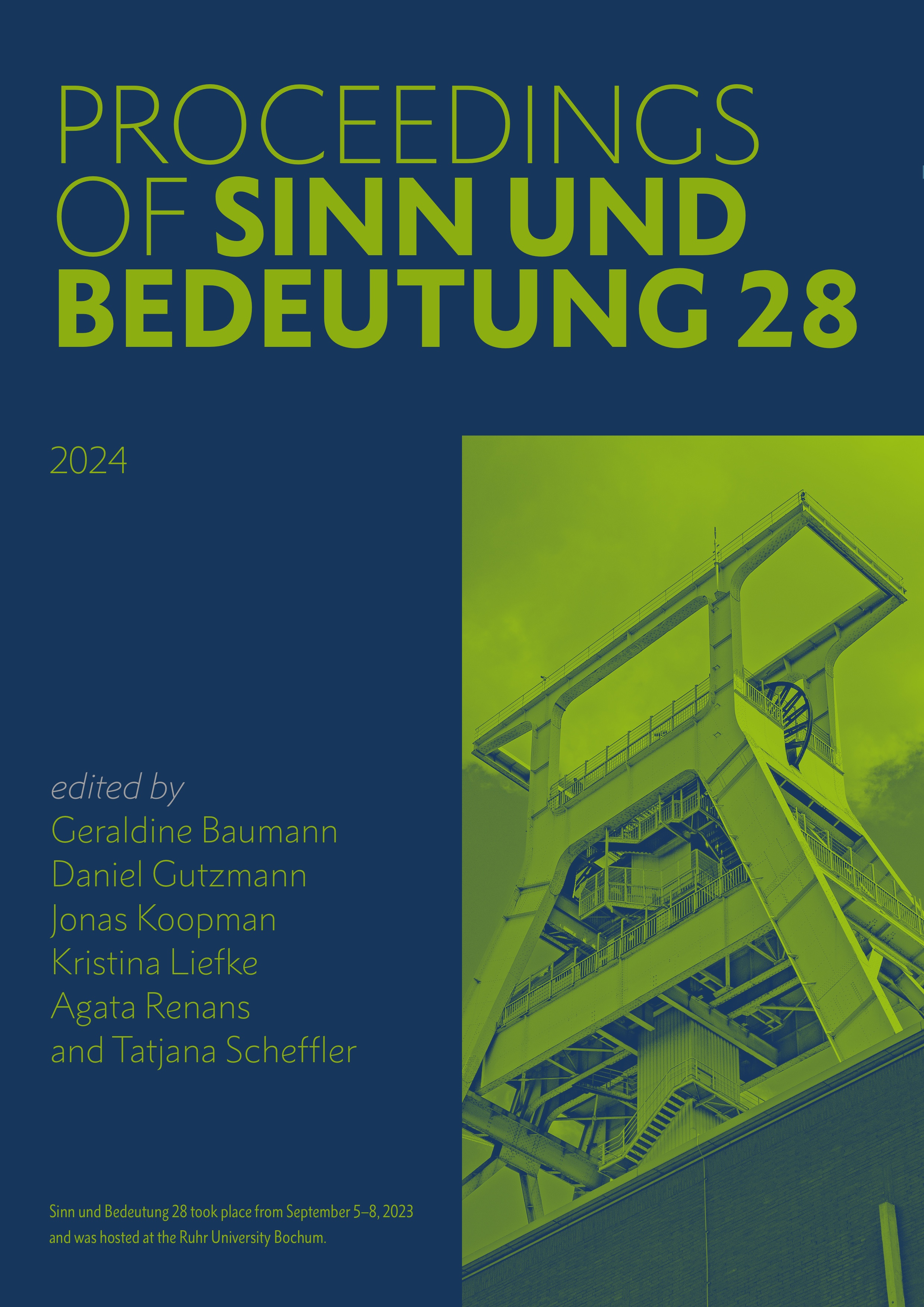Degrees and depiction – gradability in sign languages
DOI:
https://doi.org/10.18148/sub/2024.v28.1185Abstract
Based on variation in spoken languages, the Degree Semantics Parameter (DSP) pro-poses a split between languages that use a degree based system and those that use a delineation system (Beck et al., 2009; Bochnak, 2015). When it comes to sign languages, it has recently been proposed that the phonological form of gradable predicates can iconically represent the boundaries and points on a degree scale, as in Italian Sign Language [LIS] (Aristodemo and Geraci, 2018). From this perspective, sign languages seem to offer visible evidence of abstract linguistic objects like degree scales which have been theoretically motivated in spoken languages but whose existence has been inferred through certain syntactic and semantic cues. However, evidence for a degreeless semantics for American Sign Language [ASL] (Kouli-dobrova et al., 2023) suggests that sign languages could vary as much as spoken languages within this domain.We argue for an alternative semantics for comparative constructions in sign languages with a iconic component in them. Rather than assuming that that sign languages vary with respect to whether this iconicity encodes degrees, we suggest a unified view of all these constructions where the iconicity is analysed as gestures or demonstrations in the sense of Davidson (2015). Under this view, iconicity is insufficient to motivate a degree ontology in a sign language because the linguistic parts of sign languages, being languages, are built around abstraction, and what may appear to be iconic/visible pieces of the grammar are more accurately viewed as gestural depiction, just like spoken language gestures.Downloads
Published
2025-02-07
How to Cite
Thalluri, N., & Davidson, K. (2025). Degrees and depiction – gradability in sign languages. Proceedings of Sinn Und Bedeutung, 28, 1114–1132. https://doi.org/10.18148/sub/2024.v28.1185
Issue
Section
Articles
License
Copyright (c) 2025 Natasha Thalluri, Kathryn Davidson

This work is licensed under a Creative Commons Attribution 4.0 International License.
https://creativecommons.org/licenses/by/4.0/
